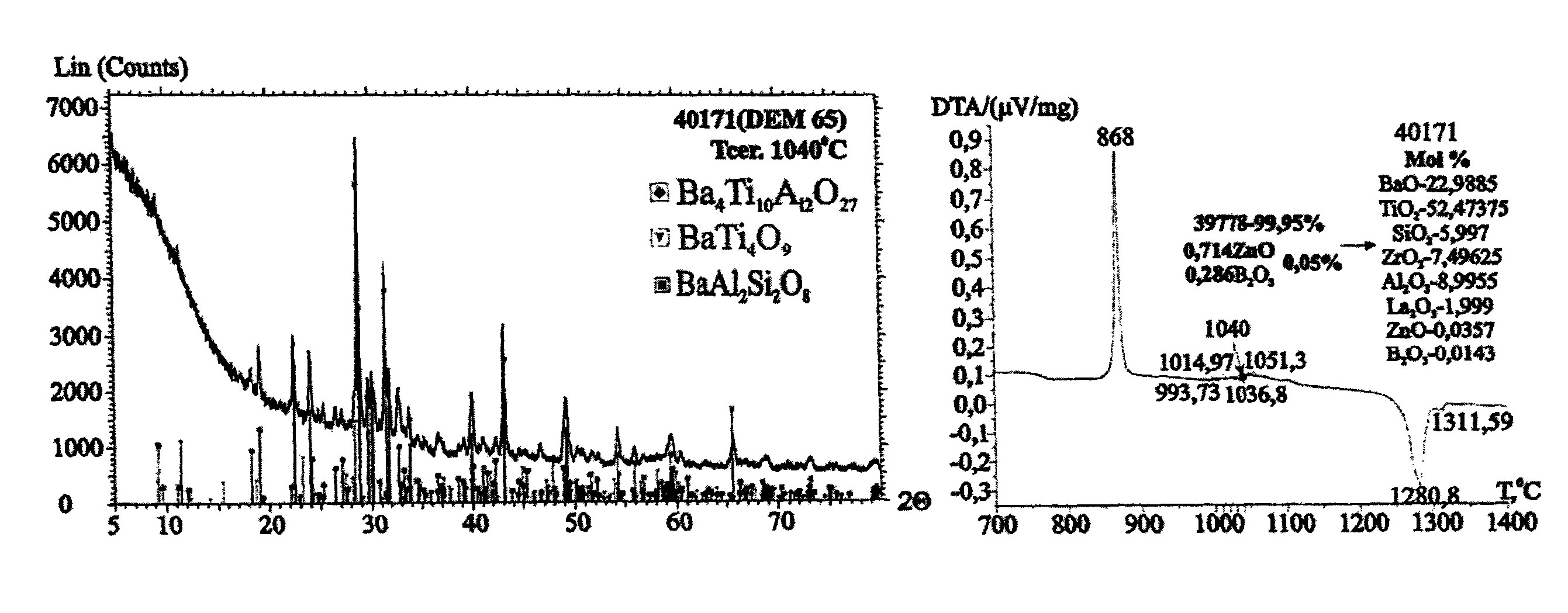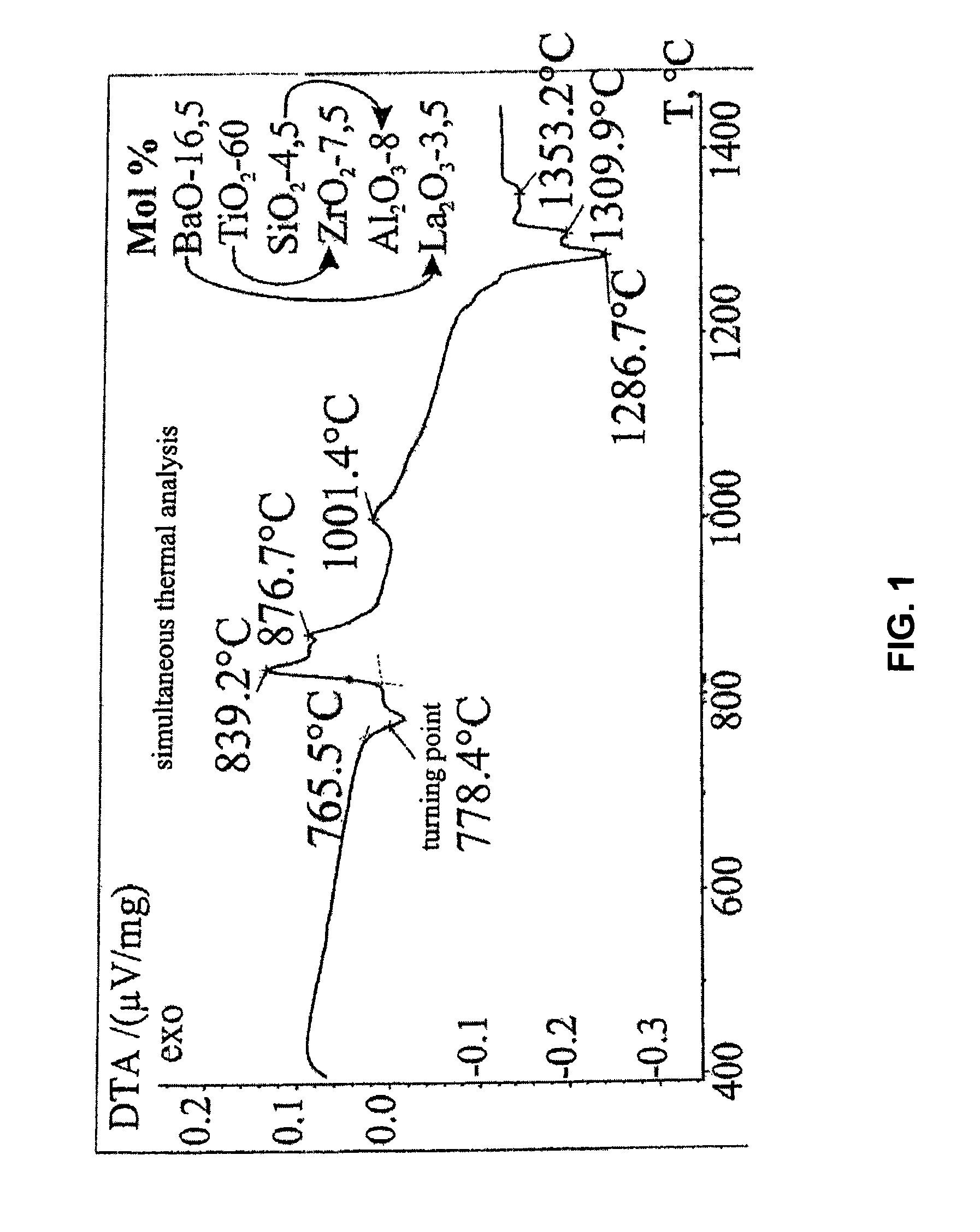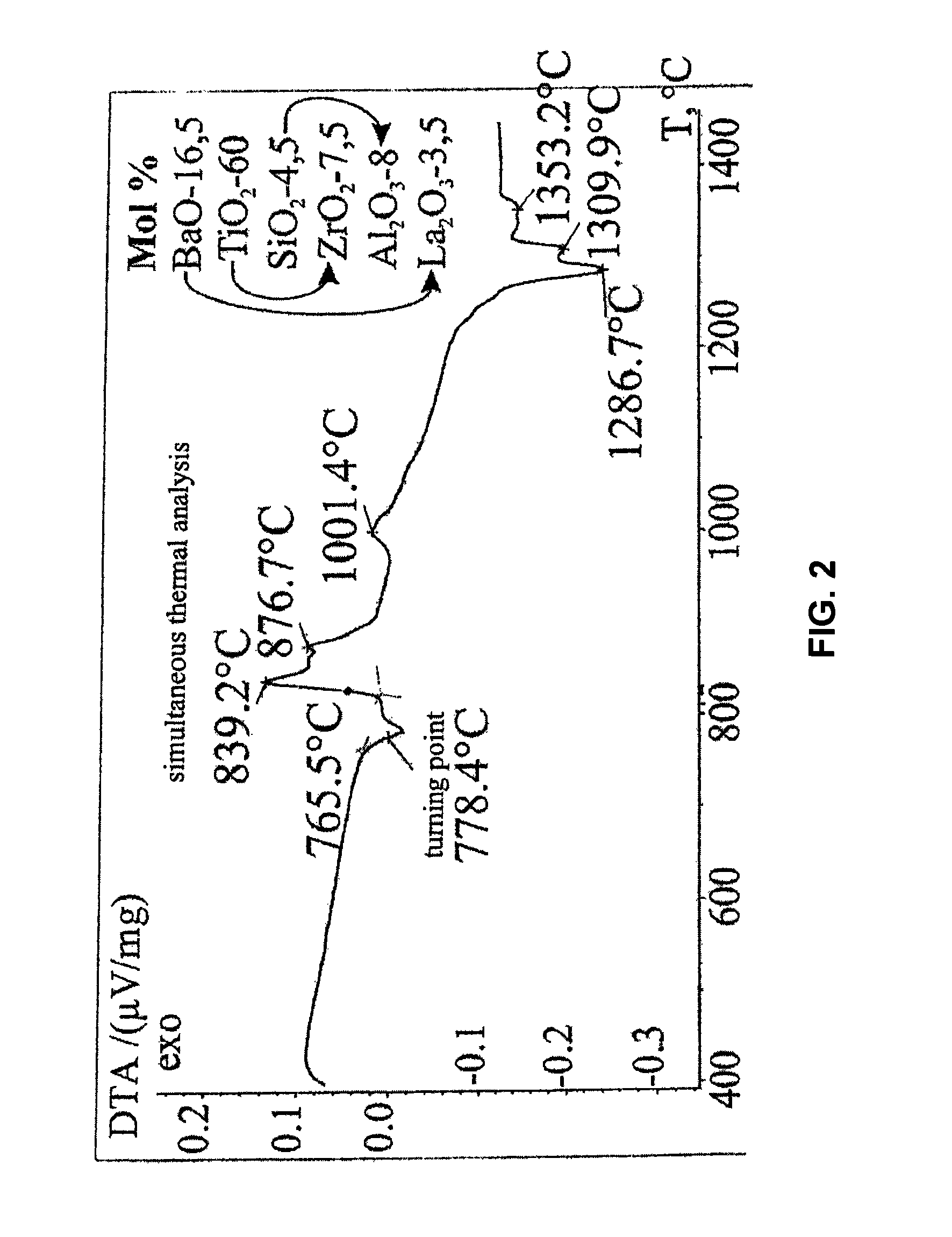Glass-ceramic as dielectric in the high-frequency range
a dielectric and high-frequency technology, applied in quartz/glass/vitreous enamel, electrical equipment, resonators, etc., can solve the problems of certain residual porosity, high cost of bismuth and niobium raw materials, etc., to achieve low dielectric loss, high relative permittivity, and convenient production and processing
- Summary
- Abstract
- Description
- Claims
- Application Information
AI Technical Summary
Benefits of technology
Problems solved by technology
Method used
Image
Examples
Embodiment Construction
[0111]Assembled in table 1 are various glass compositions for a starting glass in the Ba—Ti—Zr—Si—O system, in some cases with additions of Al, B, RE.
[0112]The various glass samples of examples 1 to 7 are first of all conventionally melted and homogenized using customary starting materials; platinum crucibles, Pt / Ir crucibles, Pt / Rh crucibles, fused silica crucibles, or aluminum oxide crucibles may be used. The samples are melted first at 1350° C. for 2 hours, then refined at 1400° C. for 30 minutes, stirred and homogenized for 20 minutes with a platinum stirrer, allowed to stand for 10 minutes, and then poured off into suitable molds made of steed, graphite, aluminum oxide, or fused silica, for instance, and hence brought into a near net shape.
[0113]After cooling to room temperature, the glass is subjected to a ceramizing step.
[0114]A typical ceramizing cycle by means of an infrared furnace is as follows:[0115]heating at 300 K / min to 1050° C.;[0116]holding at 1050° C. for 7 seconds...
PUM
| Property | Measurement | Unit |
|---|---|---|
| relative permittivity | aaaaa | aaaaa |
| crystallite size | aaaaa | aaaaa |
| relative permittivity | aaaaa | aaaaa |
Abstract
Description
Claims
Application Information
 Login to View More
Login to View More - R&D
- Intellectual Property
- Life Sciences
- Materials
- Tech Scout
- Unparalleled Data Quality
- Higher Quality Content
- 60% Fewer Hallucinations
Browse by: Latest US Patents, China's latest patents, Technical Efficacy Thesaurus, Application Domain, Technology Topic, Popular Technical Reports.
© 2025 PatSnap. All rights reserved.Legal|Privacy policy|Modern Slavery Act Transparency Statement|Sitemap|About US| Contact US: help@patsnap.com



